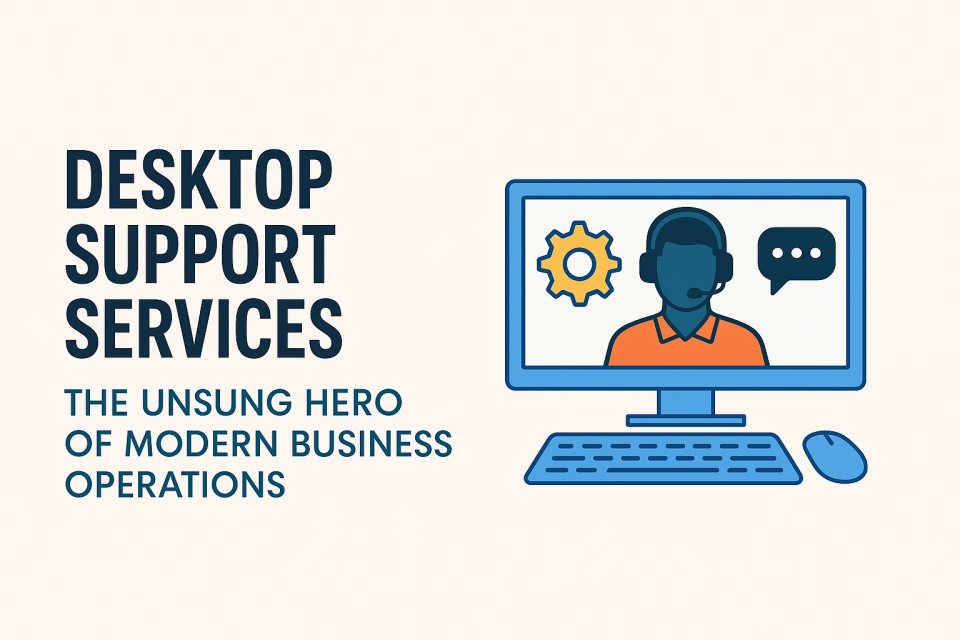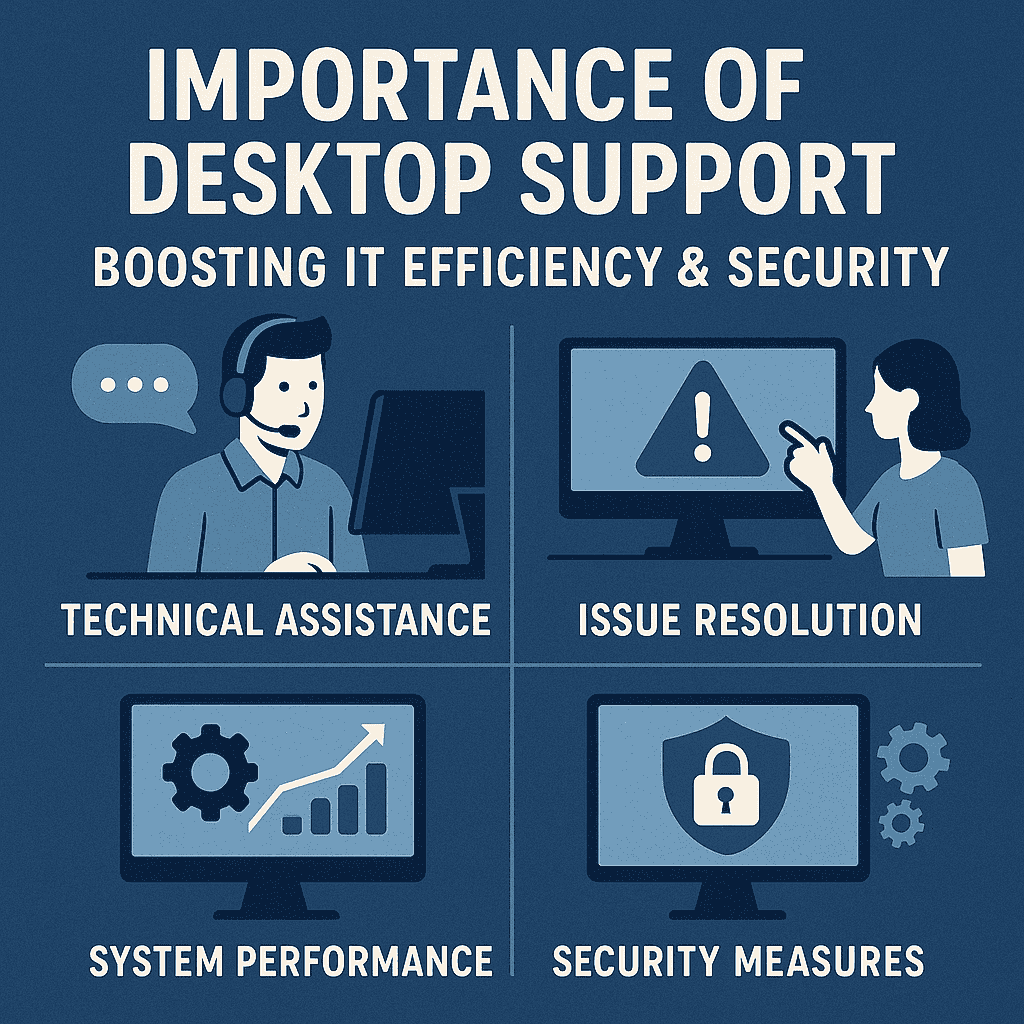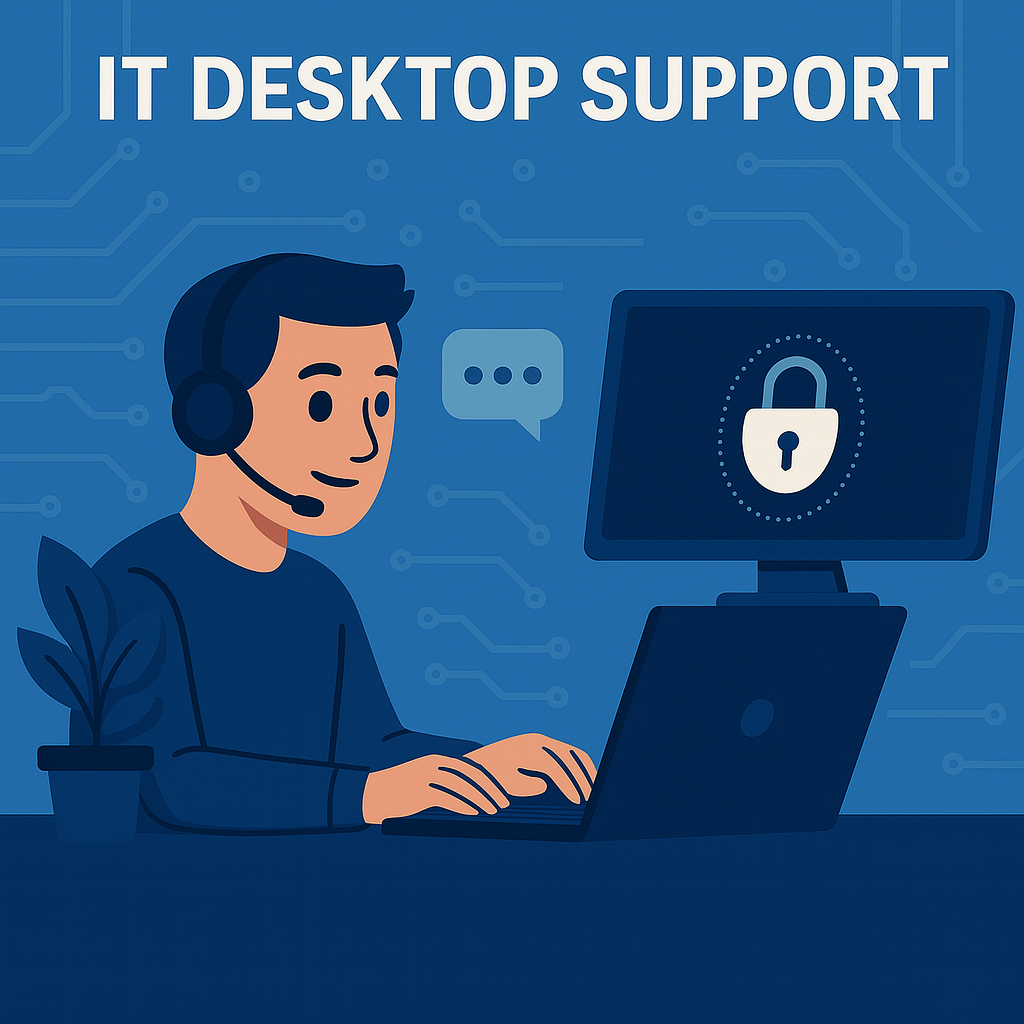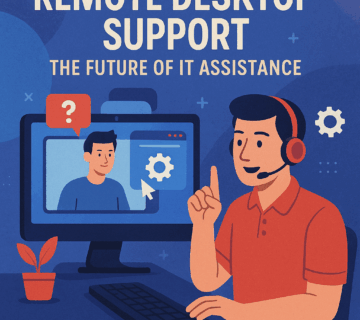Desktop Support Services: The Unsung Hero of Modern Business Operations

In the fast-paced world of technology-driven business, efficiency and productivity often hinge on seamless IT performance. While innovations such as cloud computing, automation, and artificial intelligence dominate conversations, it is the backbone of desktop support that ensures day-to-day operations run smoothly. Desktop support professionals act as the bridge between complex IT systems and end users, ensuring employees can focus on their roles without being hindered by technical issues. This blog explores desktop support in depth its role, importance, common challenges, modern trends, and future outlook while highlighting how organizations can benefit from strong support frameworks.
What Is Desktop Support?
Desktop support refers to the technical assistance provided to end users within an organization for issues related to their computer systems, software, and peripherals. It typically involves:
- Troubleshooting and resolving hardware and software issues.
- Assisting with system configurations and installations.
- Providing user training and guidance.
- Maintaining security through updates and patches.
- Ensuring connectivity across networks, printers, and other devices.
Although the role has evolved alongside new technologies, the essence of desktop support remains the same: ensuring users can work productively without disruptions.
The Role of a Desktop Support Technician
A desktop support technician wears many hats, combining technical knowledge with customer service skills. Key responsibilities often include:
- Incident Resolution
Responding to user requests and resolving issues like slow systems, failed logins, or software glitches. - Hardware Support
Replacing faulty components, setting up workstations, and managing peripherals like printers and scanners. - Software Management
Installing, configuring, and updating applications to meet user needs. - Network Connectivity
Assisting with Wi-Fi, VPN, or LAN-related issues to ensure secure access to company resources. - Security Enforcement
Applying patches, monitoring for malware, and ensuring compliance with cybersecurity policies. - User Training
Guiding employees on best practices, new tools, and safe computing habits.
In essence, desktop support technicians are problem solvers, educators, and protectors—all in one role.
Why Desktop Support Is Essentia
Despite the rise of automation and remote monitoring, desktop support remains indispensable for several reasons:
1. Business Continuity
Even minor technical issues can cause delays. Desktop support ensures quick recovery, minimizing downtime and productivity loss.
2. Security
With cyber threats growing in frequency and sophistication, desktop support teams act as the first line of defense patching systems, enforcing policies, and monitoring activity.
3. Employee Experience
A well-functioning IT environment boosts morale and efficiency. Desktop support ensures employees feel empowered, not frustrated, by their technology.
4. Adaptability
As organizations adopt new tools and systems, desktop support helps with smooth transitions, onboarding, and integration.
Common Challenges in Desktop Support
Like any IT role, desktop support comes with challenges that require both technical expertise and strong interpersonal skills:
- High Ticket Volume
Large organizations generate countless requests daily, often overwhelming teams. - Remote Workforce Support
The shift to hybrid and remote work has introduced complex challenges in supporting devices outside the corporate network. - Evolving Cybersecurity Threats
Desktop support must constantly stay updated with new risks, from phishing attempts to ransomware. - User Expectations
Employees expect instant solutions. Managing these expectations while providing quality service can be demanding. - Technology Diversity
Supporting a mix of Windows, macOS, Linux, and mobile devices requires versatile expertise.
Skills Every Desktop Support Professional Needs
Successful desktop support professionals combine hard and soft skills to deliver excellent service:
- Technical Expertise: Knowledge of operating systems, hardware, networking, and applications.
- Problem-Solving: Analytical skills to identify issues quickly and provide effective solutions.
- Communication: The ability to explain complex issues in simple terms to non-technical users.
- Patience & Empathy: Understanding user frustrations and addressing them with professionalism.
- Adaptability: Keeping up with new tools, trends, and security requirements.
Desktop Support in the Age of Remote Work
The global shift to remote and hybrid work has reshaped desktop support. No longer confined to office spaces, technicians now manage distributed systems, often across multiple time zones.
Key trends include:
- Remote Assistance Tools: Platforms like TeamViewer and Microsoft Endpoint Manager allow technicians to diagnose and resolve issues without being physically present.
- Cloud-Based Management: Software deployment, monitoring, and updates are increasingly cloud-driven.
- Self-Service Portals: Employees can access FAQs, knowledge bases, and automated fixes, reducing dependency on support teams.
- Enhanced Security Protocols: Multi-factor authentication, VPNs, and zero-trust frameworks are critical in protecting remote devices.
The Future of Desktop Support
Desktop support will continue evolving with technology, but its importance will not diminish. Instead, it will adapt in the following ways:
- Automation & AI
Chatbots and AI-powered systems will handle basic requests, allowing technicians to focus on complex issues. - Proactive Monitoring
Predictive analytics will help identify and fix problems before they affect users. - Integration with Cybersecurity
Desktop support will increasingly collaborate with security teams to form a unified defense. - Focus on User Experience
As employee productivity becomes a top priority, desktop support will play a central role in enhancing digital experiences. - Specialization
With diverse devices and software ecosystems, technicians may specialize in specific platforms or industries.
Best Practices for Effective Desktop Support
Organizations can maximize the impact of desktop support by adopting best practices:
- Centralized Help Desk Systems
Tools like ServiceNow or Jira Service Management streamline ticketing, prioritization, and tracking. - Regular Training
Keeping technicians updated with certifications (e.g., CompTIA A+, ITIL, Microsoft) ensures competence. - Knowledge Management
Building a robust knowledge base reduces repetitive tickets and empowers users with self-help resources. - Clear SLAs (Service Level Agreements)
Defined expectations ensure accountability and timely resolution. - Feedback Mechanisms
Surveys and performance metrics help improve user satisfaction. - Security-First Approach
Embedding security into every support process reduces risks.
How Businesses Benefit from Strong Desktop Support
Organizations that invest in robust desktop support reap significant benefits:
- Reduced Downtime: Quicker resolutions mean smoother workflows.
- Improved Productivity: Employees focus on work instead of troubleshooting.
- Cost Savings: Proactive monitoring reduces major breakdowns and expensive downtime.
- Stronger Security Posture: Timely updates and monitoring prevent breaches.
- Enhanced Employee Satisfaction: Happy employees contribute to better business outcomes.
Case Example: Desktop Support in Action
Imagine a mid-sized company where employees face frequent issues with remote VPN access. Without timely support, project deadlines suffer. By implementing a proactive desktop support framework—featuring remote management tools, user training, and 24/7 assistance the company achieves:
- A 40% reduction in downtime.
- Faster onboarding for new hires.
- Improved employee satisfaction scores.
- Stronger compliance with data security policies.
This example illustrates how desktop support directly impacts business success.
Conclusion
While often operating behind the scenes, desktop support is one of the most critical elements of modern business. It ensures technology works seamlessly, employees remain productive, and organizations stay secure. As workplaces continue to evolve, desktop support will adapt embracing automation, cloud tools, and AI while maintaining its central mission: empowering end users.




No comment